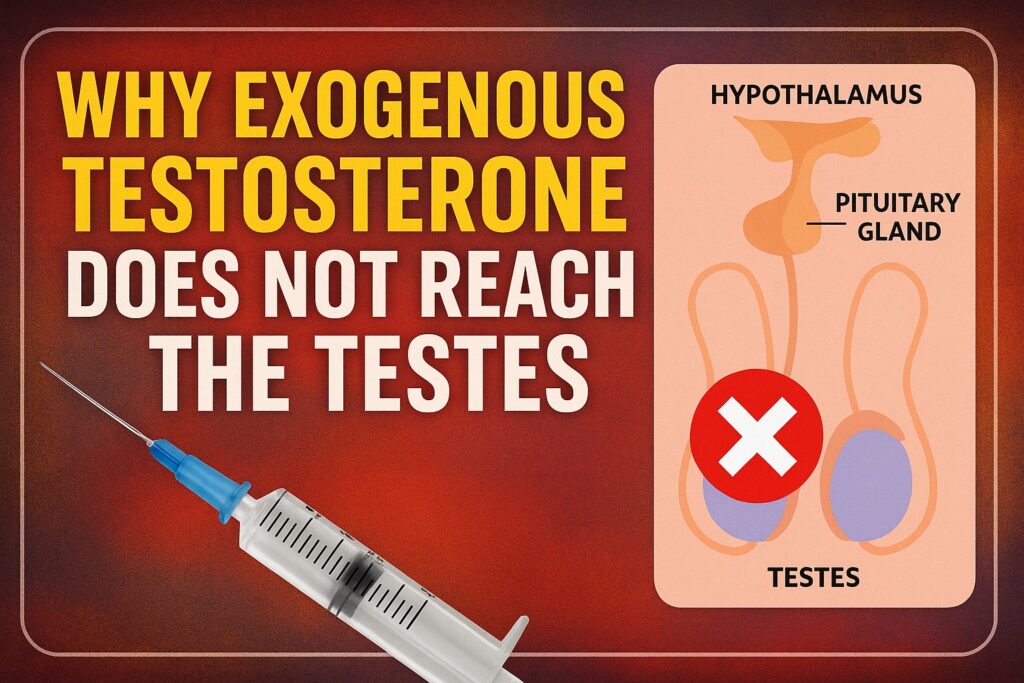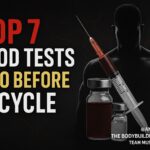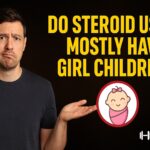Understanding the Science Behind HPTA Suppression and Testicular Shutdown
When you inject or apply exogenous testosterone—whether it’s Test E, Cypionate, Propionate, or any synthetic form—you’re boosting your body’s total testosterone levels. But despite this, your testes may shrink, and natural testosterone production shuts down. Why does this happen? Why doesn’t that external testosterone reach the testes and keep them functional?
Let’s break this down.
🔬 The Role of Testes in Natural Testosterone Production
Your testes are responsible for producing testosterone naturally, under the control of a hormonal loop called the Hypothalamic-Pituitary-Testicular Axis (HPTA). Here’s how it works:
-
The hypothalamus releases GnRH (Gonadotropin-Releasing Hormone)
-
GnRH stimulates the pituitary gland to produce LH (Luteinizing Hormone) and FSH (Follicle-Stimulating Hormone)
-
LH acts on Leydig cells in the testes, triggering them to produce testosterone
-
FSH helps in sperm production (spermatogenesis)
This is a feedback-regulated system—when testosterone is high, your brain senses it and reduces LH & FSH to avoid overproduction.
🚫 Why Exogenous Testosterone Fails to Reach or Stimulate the Testes
When you inject testosterone, your blood levels spike, and your brain thinks, “We have more than enough testosterone!” As a result:
-
GnRH drops
-
LH and FSH levels plummet
-
Leydig cells stop producing testosterone
-
Testes shrink due to inactivity
❌ So, exogenous testosterone doesn’t need to reach the testes — it replaces the function of the testes.
The testes are bypassed entirely, and instead of local production, testosterone is now coming directly into your bloodstream from an external source.
🧪 Key Problem: Lack of Intratesticular Testosterone
Even though blood testosterone is high, intratesticular testosterone (within the testes) becomes very low or near zero because LH is no longer stimulating Leydig cells.
This low internal level leads to:
-
Testicular atrophy
-
Reduced sperm production
-
Infertility
⚠️ Side Effects of This Shutdown
-
Shrunken testicles
-
Decreased fertility
-
Lowered FSH/LH levels
-
Post-cycle testosterone crash
🛡️ How to Prevent This Shutdown?
-
HCG (Human Chorionic Gonadotropin)
Mimics LH and keeps testes stimulated during cycle. -
Low-dose FSH (if fertility is a concern)
-
Proper PCT (Post Cycle Therapy)
Includes SERMs like Clomid or Nolvadex to restart LH/FSH production.
✅ Key Takeaways
-
Exogenous testosterone bypasses the testes—it’s injected directly into the bloodstream.
-
The brain senses this high testosterone and shuts down natural testosterone production by reducing LH and FSH.
-
This causes testicular inactivity, shrinking, and fertility issues.
-
Tools like HCG can help maintain testicular health during cycles.
💉 Educate Before You Medicate
Exogenous testosterone is powerful—but without understanding its impact on your body’s natural hormone system, you risk long-term suppression and reproductive issues. Always cycle wisely, run proper bloodwork, and plan PCT protocols under expert supervision.
Written by:
Coach Varun Dhir
Founder – The Bodybuilding Doctor & Team Muscle Factory
Website: www.thebodybuildingdoctor.in




